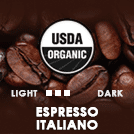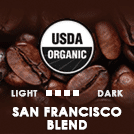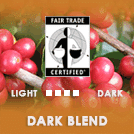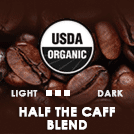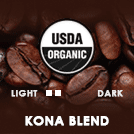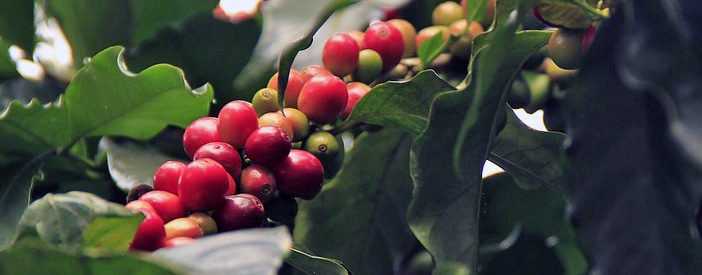
Green Coffee: The Definitive Guide
Most people’s experience of coffee is pretty straightforward; it lives on a shelf in a grocery store or coffee shop until it’s purchased, and the coffee inside is brown, aromatic, and delicious, waiting to be enjoyed.
The experience of those of us who work in coffee, however, is quite the opposite; to us, coffee is something green, something with incredible variation in moisture and density levels, in growing region, elevation and processing method. We must consider these factors before we roast, package, and send coffee to store shelves, and today we’re going to pull back the curtain and talk a little about how we manage that evaluative process at Cafe Altura.
This blog post will give you a basic overview of the factors we consider when evaluating green coffee, namely, moisture content, density, bean size, and processing method, as well as how we use this information to select roast profiles and make sure our coffee is delicious by the time it’s in your cup.
Before I begin, I should disclaim that while the following discussion will unfold our green coffee evaluation methodology, our coffee purchasing is not strictly influenced by this analysis; we purchase coffee based on how it tastes. The following data points influence a coffee’s flavor, granted, but they do not individually or collectively determine our perception of a given coffee’s sensory quality; they are factors we consider alongside taste, not in place of it.
Moisture Content
The moisture content of a given coffee is how much of that coffee is composed of water, expressed as a percentage. This reading is useful for a couple reasons, and chief among them is that it helps us assess how well the coffee was dried and how shelf stable it might be. In general, green coffee with a moisture content of 9-12% is well dried and can remain shelf stable for up to a year.

I say generally for a few reasons; 1) 9-12% is a very wide range, 2) the moisture content of the coffee tells us nothing about how the coffee was dried (i.e., slowly using raised beds vs. quickly using mechanical driers), and 3) coffee is very porous, and as such its moisture content can fluctuate over time.
Such details mean that moisture content is far from an authoritative measure of a coffee’s quality or stability. However, in the absence of a lab setup with far more complex equipment, moisture content is one of few verifiable measures we have to evaluate coffee when it hits our warehouse. As such, we use it primarily in concert with the other data described herein to determine green quality and roast profiling options during our intake procedures.
Speaking of roast profiling, moisture content’s effect on roasting can be vastly oversimplified to the following binary; coffee with a low moisture content (9-10%) roasts faster than coffee with a high moisture content (11-12%), which will roast more slowly. I say this with the crucial qualifier that moisture content must be considered in concert with other factors when making profiling suppositions; moisture content is only useful when leveraged alongside other information.
Chris Kornman of Royal Coffee has a wonderful post on moisture content and water activity that further unfolds some of what is discussed here.
Processing Method
A future blog post will delve more deeply into the ways in which processing method affects a given coffee’s flavor, but for the purposes of this discussion, I’ll simplify coffee processing into two main groups; washed and non-washed coffees.

Washed coffees are pulped, fermented, and as their name suggests, washed, which means that the base flavors available in the resulting green coffee are clean, crisp, and provide a blank canvas for the roaster to interact with.
Non-washed coffees come in a variety of forms, but they diverge from washed coffees in that in all cases the means of processing imputes a distinctive flavor to the coffee which, though it may be pleasant and desirable, is fundamentally dissimilar to the blank canvas of a washed coffee; the canvas already has a little drawn on it, to continue the metaphor.
Because of this difference, we, and most of the coffee industry, primarily purchase washed coffee; it is clean, consistent, and easy to manipulate in a roaster. There are certain non-washed coffees (wet-hulled Sumatran coffee being a notable example) which we carry because of their distinctive and popular flavor profile, but in general, we seek to purchase washed coffees because of their ease of use.
This statement is not a denigration of non-washed coffees, however; on the contrary, non-washed coffees often offer uniquely delicious and highly prized flavor profiles. The central issue is that non-washed coffees require more work than washed coffees to source and roast consistently, which is why we tend to steer away from them outside specific instances.
Density
Coffee density is the single most powerful piece of information a roaster can glean from green coffee. The reason for this is very simple; substances with high density conduct heat more readily than substances with low density. Consequently, if you know how dense a coffee is relative to other coffees, you can make a good guess as to how well it will conduct heat, and consequently how fast or slow it will proceed through the roasting process (Joe Marocco of Café Imports explains this in much greater detail in this awesome blog post.

In my experience, which is far from authoritative, when used in concert with moisture content and bean size (which we’ll discuss in a moment), density is the most accurate predictor of a coffee’s behavior in the roaster. To generalize the way this data informs a roaster’s approach, more dense coffees can be roasted with more heat because their higher base conductivity means they take on large amounts of heat evenly and quickly, whereas less dense coffees benefit from slower roasting, as their lower conductivity means they need gentler heat to roast evenly.
Since roasting machines and coffee densities vary widely, there is no objective standard for how density affects roasting; individual roasteries must calibrate this effect in their own context with their specific equipment. Once placed in context, however, density becomes a powerful tool to use in intake procedures and speeds up iteration time in profiling a given coffee.
Much of coffee roasting is guiding a coffee along the path it naturally desires to take as opposed to forcing it into a particular roast profile; density is a valuable tool precisely because it provides roasters with crucial clues as to what that path might look like before coffee ever enters a roaster.
It should be noted that coffee density is never to be taken as a comment on a given coffee’s sensory quality; we use density merely as a roast profiling tool, not as a check on green coffee quality.
Bean size
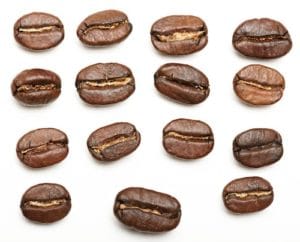
Bean size affects roasting in a simple, but crucially important way; it modulates the surface area of a given batch of coffee. For example, imagine two coffees; one a washed Ethiopian Yirgacheffe whose beans are very tiny, and the other a wet-hulled Sumatran Mandheling whose beans are very large. Bracketing out density differences for the moment, for the same weight of coffee, the Sumatran coffee will have a larger surface area than that of the Ethiopian coffee; because the beans are physically larger, they will occupy more space in the roaster’s drum, and thereby disperse the heat from the roaster over a larger surface area.
In general, this means that coffees with larger bean sizes will roast more slowly than coffees whose beans are very small; a consistent amount of heat input will pass through a smaller area faster than it will a larger one. As I mentioned above, however, density can complicate this. A large-bean coffee can be very dense, and a small-bean coffee can be soft, and this difference would affect the abilities of each coffee to conduct heat. As such, as with moisture content and density, bean size should not be taken as an authoritative predictor of how a coffee will behave in the roaster. It is one factor which must be taken in concert with others to glean insight into how a given coffee will behave.
In conclusion, the aforementioned factors are but a few of the elements one can consider when evaluating green coffee. They are immensely helpful to us as we consider the types of coffee that we want to buy and roast, and we hope this small insight into the way we think about coffee has been interesting and/or helpful to you. Until next time.
~ Have you tried our Blends ~
Article By : Bret Colman, Director of Coffee / Head Roaster, Cafe Altura Organic Coffee

